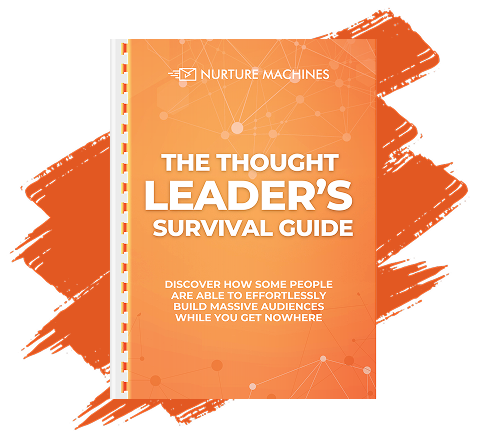Effective customer journey mapping is a strategic process that helps organizations visualize and improve the complete customer experience with their brand, from initial discovery to post-purchase support. By charting this journey across digital and physical touchpoints, companies can identify friction points, recognize opportunities for engagement, and implement meaningful improvements that directly enhance customer satisfaction and loyalty.
This guide outlines essential best practices for journey mapping, including how to define clear objectives, create accurate personas, and visualize user paths. You’ll also learn how to use customer feedback and behavioral data to drive actionable changes across marketing, support, and product experiences. Whether refining your onboarding process or aligning cross-channel engagement, customer journey mapping can be a powerful tool to elevate the customer experience and support long-term growth.
Key Takeaways
- Customer journey mapping helps visualize the customer experience, from the first interaction to post-purchase support, so businesses can improve every step.
- Setting clear goals and building accurate personas is essential before starting the mapping process, as it ensures the map reflects real customer needs.
- Focusing on specific journey stages (like onboarding or purchase) makes mapping more manageable and actionable.
- Effective maps include emotional and behavioral insights, showing not just what customers do but also how they feel during each interaction.
- Journey maps must lead to fundamental changes, such as prioritizing fixes, assigning ownership, and tracking the results of improvements.
- Keeping the map updated with new data and feedback ensures it stays relevant, supports cross-team collaboration, and continues to improve customer satisfaction over time.
Setting the Stage: Preparations for Effective Journey Mapping

The foundation of successful customer journey mapping begins with strategic preparation. Before any visualizations or diagrams take shape, organizations must define clear objectives, develop accurate customer personas, and determine the precise journey scope. These initial steps set the direction for a meaningful, actionable mapping initiative.
Define Clear and Measurable Objectives
Every journey mapping effort must begin with a specific goal. What does your organization want to achieve? Objectives should be measurable, actionable, and aligned with broader business priorities, such as reducing churn, improving onboarding, or enhancing support responsiveness.
For example, a clear objective might be:
- Identify where customers experience delays during digital onboarding.
- Improve conversion rates by optimizing post-purchase follow-ups.
Establishing this focus ensures the journey map stays purpose-driven and tied to tangible outcomes.
Develop Insightful Customer Personas
Personas are essential for creating customer-centric maps that reflect real behaviors and expectations. These fictional-yet-data-backed profiles synthesize information like demographics, purchase behaviors, motivations, and pain points.
To build effective personas, gather data from:
- Customer interviews and focus groups
- Surveys and behavioral analytics
- CRM and support ticket trends
For instance, one persona might reveal that a segment of users expects personalized email follow-ups and fluid transitions between online touchpoints and in-person service. These insights help humanize the customer experience and guide design decisions based on empathy.
Narrow the Scope for Focused Mapping
Rather than mapping the entire customer lifecycle at once, start with a defined journey segment. Choose a specific stage such as:
- Initial brand discovery
- Product consideration and decision-making
- Onboarding or post-service feedback loops
A narrower scope reduces complexity and makes it easier to identify specific touchpoints, emotional highs and lows, and areas for immediate improvement.
Build a Cross-Functional Mapping Team
Successful journey mapping requires input from multiple departments. Assemble a team that includes representatives from:
- Marketing and sales
- Customer support and success
- Product development and IT
- Frontline employees who interact directly with customers
This diverse collaboration ensures the map reflects both internal knowledge and actual customer experiences, making the final output more accurate and actionable.
Core Techniques: Applying Customer Journey Mapping Best Practices

Once foundational preparations are complete, the next step is applying proven techniques to build a customer journey map that captures both experience and emotion. This stage involves identifying touchpoints, documenting behaviors and thoughts, structuring the journey by phase, and validating insights with real customer feedback.
Identify All Key Touchpoints and Channels
A comprehensive journey map must include every point of contact between the customer and your brand—whether digital, physical, or hybrid. This includes:
- Website visits and form submissions
- Social media interactions and ads
- In-store visits and staff engagements
- Email communications and chat support
- Mobile app usage and follow-up calls
Capturing these touchpoints helps identify patterns in customer behavior and uncover opportunities to streamline or enhance experiences.
Document Customer Actions, Thoughts, and Emotions
Go beyond tracking what customers do—map out what they think and feel at each stage. This adds critical depth to your understanding of their experience. Consider:
- What motivates their actions at each step?
- Are they feeling confident, confused, or frustrated?
- Where are emotional highs and lows occurring?
For instance, if users consistently express anxiety during the checkout process, that’s a clear indicator for UX improvement. Including emotional and cognitive responses turns your map into a tool for building empathy-driven strategies.
Segment the Journey Into Logical Phases
To bring structure and clarity, divide the journey into distinct phases, such as:
- Awareness – when the customer first discovers your brand
- Consideration – where comparisons and evaluations occur
- Purchase – when the customer commits to a product or service
- Post-Purchase – including onboarding, support, and retention efforts
Segmenting the experience in this way helps teams align improvements with specific goals and ensures that each phase receives focused attention.
Visualize the Journey for Clear Understanding
Use visual aids to communicate insights effectively across your organization. These may include:
- Flowcharts showing touchpoint progression
- Timelines of customer actions
- Emotion graphs tracking satisfaction over time
The goal is to make complex journey data digestible, enabling faster collaboration and decision-making among stakeholders.
Validate the Map With Real Customer Feedback
No matter how detailed your assumptions are, real-world feedback is essential. Confirm the accuracy of your journey map by:
- Conducting customer interviews
- Sending post-interaction surveys
- Using feedback widgets or support chat logs
Direct input ensures the journey reflects lived experiences—not just internal interpretations. It also reveals blind spots or missed moments that could be vital to improvement.
The Payoff: How to Unlock Customer Insights With Effective Journey Mapping

Customer journey mapping isn’t just about visualizing steps—it’s about revealing deep insights that fuel smarter decision-making and stronger relationships. When implemented thoughtfully, journey maps uncover pain points, expose missed opportunities, and guide organizations toward customer-centric improvements that elevate loyalty and retention.
Identify Hidden Pain Points Across the Journey
By walking through the journey from the customer’s point of view, teams can detect friction that might otherwise go unnoticed. These can include:
- Confusing messaging during the onboarding process
- Delays in support response time
- Inconsistent cross-channel experiences
For example, a map might reveal that many users abandon the process just before checkout—not because of price, but due to poor mobile interface design. Insights like these empower teams to prioritize the most impactful fixes.
Uncover Opportunities to Enhance Engagement
Journey maps also illuminate moments where small improvements can create outsized impact. Instead of focusing solely on resolving issues, teams can proactively optimize interactions.
Consider these examples:
- Sending an automated thank-you email after purchase to reinforce a positive brand impression
- Offering in-app onboarding tips to reduce frustration for new users
- Creating loyalty prompts after a successful customer service interaction
By identifying these moments of opportunity, brands can shift from reactive to proactive engagement, deepening customer satisfaction.
Bridge Gaps Between Customer Expectations and Experience
Another powerful outcome of journey mapping is the ability to pinpoint disconnects between what customers expect and what they actually receive. These gaps often surface in areas like:
- Mismatched communication channels (e.g., customers prefer SMS but only receive emails)
- Inadequate support during critical transition points (like post-signup)
- Lack of personalization in product recommendations or service follow-up
These insights drive strategic innovation. For instance, if users report low satisfaction due to slow mobile responsiveness, the company can prioritize mobile-first design updates to align with modern expectations.
Enable Data-Driven, Customer-Centric Decisions
Journey mapping transforms qualitative feedback into actionable data. When used alongside quantitative analytics, such as conversion rates and drop-off metrics, it enables teams to back decisions with evidence rather than assumptions.
For example:
- If support-related stress is high in post-purchase phases, introduce faster live chat options
- If exit rates spike on a particular landing page, cross-reference with customer feedback to understand why
These insights give organizations the confidence to make bold, customer-aligned changes that measurably improve performance.
Support Continuous Refinement and Internal Alignment
A robust journey map serves as a dynamic blueprint for cross-functional collaboration. It enables marketing, product, support, and leadership teams to stay aligned on what matters most: the customer experience.
Ongoing updates—driven by feedback loops and real-time data—help the map evolve with the business. In doing so, it becomes not just a tool for strategy but a catalyst for long-term customer advocacy and growth.
Essential Elements for a High-Impact Customer Journey Visualization

A well-designed customer journey map doesn’t just document experiences—it translates insights into a format that is easy to understand, act on, and share. By combining qualitative insights with quantitative data, and presenting them in a structured, accessible format, your journey map becomes a strategic asset for decision-making across teams.
Clearly Define Customer Goals at Each Stage
Effective journey maps center on customer intent. What is the user trying to accomplish at each phase of their journey?
Rather than only mapping actions, it’s critical to articulate what the customer wants at that moment. For example:
- In the Awareness stage, the goal might be discovering solutions to a problem.
- In the Consideration phase, the customer may seek comparisons or testimonials.
- During Purchase, they expect simplicity, trust, and fast decision-making support.
- In Post-Purchase, goals often shift toward onboarding, service, and continued value.
Stating these goals clearly helps you evaluate whether your current experience supports or obstructs customer intent.
Integrate Qualitative and Quantitative Data
Strong journey visualizations rely on a balance of numbers and narratives. Data adds credibility, but stories bring clarity.
Include:
- Quantitative metrics like click-through rates, conversion percentages, dwell times, and churn rates
- Qualitative insights from customer interviews, focus groups, support logs, or survey comments
For instance, pairing a 60% cart abandonment rate with customer feedback that mentions confusing checkout flows builds a more compelling and actionable case for improvement.
Highlight Actionable Opportunities
A high-impact map does more than display information—it points to what needs to happen next. Each stage should identify opportunities to improve or optimize the experience.
These might include:
- Adding live chat during the decision phase to reduce drop-offs
- Streamlining account setup to remove onboarding friction
- Personalizing follow-up messaging based on browsing history
By spotlighting high-value action items, you convert insights into a roadmap for change.
Design for Clarity and Collaboration
The visual layout of your journey map matters just as much as the data it contains. The goal is to communicate insights quickly to multiple stakeholders—technical and non-technical alike.
Best practices for design include:
- Using color coding to distinguish phases or emotions
- Adding icons or visual markers for actions, thoughts, and tools
- Keeping a logical left-to-right or top-down flow
- Ensuring maps are legible and scalable, whether printed, presented, or embedded in dashboards
A well-designed map improves alignment and serves as a reliable reference point during team meetings and strategic planning sessions.
Position the Map as a Living Document
Finally, remember that a customer journey map should evolve alongside your business and your audience. It’s not a one-and-done document.
Build in time for regular updates and integrate the map into your workflows. By treating it as a living asset, you ensure it reflects real-time customer behaviors, adapts to new product offerings, and stays aligned with shifting business goals.
From Map to Action: Implementing Changes Based on Journey Insights

Creating a customer journey map is only the beginning. The real impact comes from what you do with the insights. Transitioning from visualization to action means translating observed patterns, behaviors, and pain points into measurable improvements. This phase ensures the map drives ROI—not just understanding.
Prioritize Improvements Based on Impact and Feasibility
Once pain points and gaps have been identified, not all issues should be tackled at once. To make meaningful progress, teams must prioritize based on:
- Customer impact – Which issues affect satisfaction, retention, or revenue the most?
- Effort vs. outcome – What changes are low-effort but high-impact?
- Feasibility – What’s realistic based on current resources and timelines?
For example, if 40% of users drop off at checkout due to confusing navigation, that becomes a high-priority fix with measurable upside.
Develop Targeted, Actionable Solutions
With priorities set, the next step is building solutions that address specific issues uncovered in the map. These should be tailored, not generic.
Examples might include:
- Redesigning mobile navigation to reduce checkout abandonment
- Introducing a chatbot for real-time answers during product evaluation
- Streamlining onboarding emails to reduce user confusion in the first week
Each initiative should come with a clear timeline, budget, and expected outcome (e.g., reduce churn by 15% over six months).
Assign Clear Ownership and Resources
No solution will move forward without ownership. Assign responsibilities early, and make accountability part of the implementation plan.
Define:
- Project leads or team owners
- Supporting departments (e.g., product, marketing, customer success)
- Timeline and key milestones
- Reporting methods (dashboards, weekly check-ins, stakeholder reviews)
Establishing clear accountability helps maintain momentum and ensures consistent follow-through.
Track Results and Measure Performance
To know whether journey-based improvements are working, organizations must track both qualitative feedback and quantitative performance.
Metrics may include:
- Increased conversion rates or customer retention
- Reduced support requests or complaints at key stages
- Improved email open rates or task completion rates
Supplement these with direct customer input through:
- Post-interaction surveys
- Follow-up interviews
- User behavior analytics
This feedback loop validates the success of your initiatives—or highlights where further adjustment is needed.
Communicate Progress and Iterate Continuously
Keeping stakeholders informed creates transparency, builds momentum, and encourages a customer-centric culture. Regular updates should highlight:
- Wins (e.g., “NPS increased by 8 points after onboarding fix”)
- Lessons learned
- Remaining opportunities
Use team meetings, internal dashboards, and cross-functional briefings to ensure journey mapping remains part of everyday strategic conversation—not a one-time project. Continuous refinement makes the map a living strategy document that adapts as your customers and offerings evolve.
Keeping Your Map Relevant: Ongoing Management and Evolution

A customer journey map delivers the most value when treated as a dynamic resource—not a static report. As customer behaviors shift, new technologies emerge, and your business grows, the journey map must evolve to reflect these changes. Ongoing management ensures the map remains accurate, insightful, and aligned with current business goals.
Establish a Regular Review Cycle
Set a schedule for periodic journey map reviews to ensure it remains current. Quarterly or biannual reviews are ideal for capturing evolving customer needs and internal changes. During each review, evaluate:
- New customer feedback and pain points
- Shifts in behavior across channels (e.g., mobile, email, social media)
- Business updates like new product launches or service changes
These checkpoints prevent the map from becoming outdated and support continuous experience improvement.
Incorporate Fresh Data and Feedback Continuously
Customer expectations can change rapidly. To keep pace, organizations must continuously gather and integrate feedback into their journey maps.
Sources of ongoing data include:
- Post-purchase surveys and NPS scores
- User behavior analytics (heatmaps, drop-off reports)
- Customer interviews, focus groups, or support transcripts
- Social listening tools or online reviews
Feeding this information into the map helps maintain relevance and uncover new opportunities for optimization.
Adapt the Map to Reflect Organizational Growth
As your company adds new services, channels, or audience segments, the journey map must scale accordingly. For example:
- A shift to omnichannel support may require updates to the onboarding or helpdesk experience
- Launching a mobile app may change the purchase or post-service flow
- Expanding internationally might reveal new touchpoints with unique cultural implications
Be proactive in adjusting map segments, timelines, and personas to reflect these structural shifts.
Maintain Cross-Functional Collaboration
A living journey map is most effective when used across departments—not just by CX or marketing teams. Foster a culture where teams regularly consult and contribute to the map during:
- Strategy and planning sessions
- Product or feature development cycles
- Quarterly business reviews or customer success meetings
Encouraging shared ownership turns the map into a central resource for customer-centric decision-making.
Reinforce the Map’s Role as a Strategic Asset
Ultimately, journey mapping should serve as an ongoing engine for innovation and alignment. By continuously refining and reapplying the insights, organizations can:
- Improve personalization and segmentation
- Uncover friction before it becomes critical
- Stay competitive in fast-changing markets
Treat the map as a working document—one that adapts, grows, and improves just as your customers do.
Conclusion
Customer journey mapping is more than just a visual tool—it’s a framework for building stronger customer relationships through empathy, data, and continuous improvement. By carefully planning each phase, validating findings with real user input, and aligning insights with business goals, organizations can streamline processes, personalize interactions, and strengthen customer retention.
As customer expectations evolve, your journey maps must evolve too. Regular updates, stakeholder collaboration, and integration of fresh data ensure that these maps remain relevant and actionable. Ultimately, a well-executed customer journey map becomes a strategic asset—guiding decisions that put the customer at the center of every initiative and driving measurable impact across the organization.
Frequently Asked Questions
What is customer journey mapping?
Customer journey mapping is a process that visually outlines each stage a customer goes through when interacting with a business. It includes key touchpoints, channels, and emotional responses, helping organizations understand and improve the customer experience.
Why is customer journey mapping important for retention?
By identifying friction points and unmet needs across the customer experience, businesses can take targeted action to improve satisfaction. These improvements often result in better customer support, stronger engagement, and increased loyalty.
What types of data should be included in a journey map?
A strong journey map incorporates both quantitative data (like conversion rates and engagement metrics) and qualitative insights (such as customer interviews and feedback surveys). This balanced approach offers a holistic view of how customers think, feel, and act.
How often should we update our customer journey maps?
Journey maps should be reviewed on a regular schedule—typically quarterly or semi-annually—to reflect new customer behavior, emerging trends, and updates to your product or service offerings.
Can customer journey mapping be applied to both digital and offline experiences?
Yes. Journey mapping is most effective when it includes all touchpoints—online and offline. From website navigation and mobile responsiveness to in-store experiences and customer service calls, a comprehensive map ensures no interaction is overlooked.







